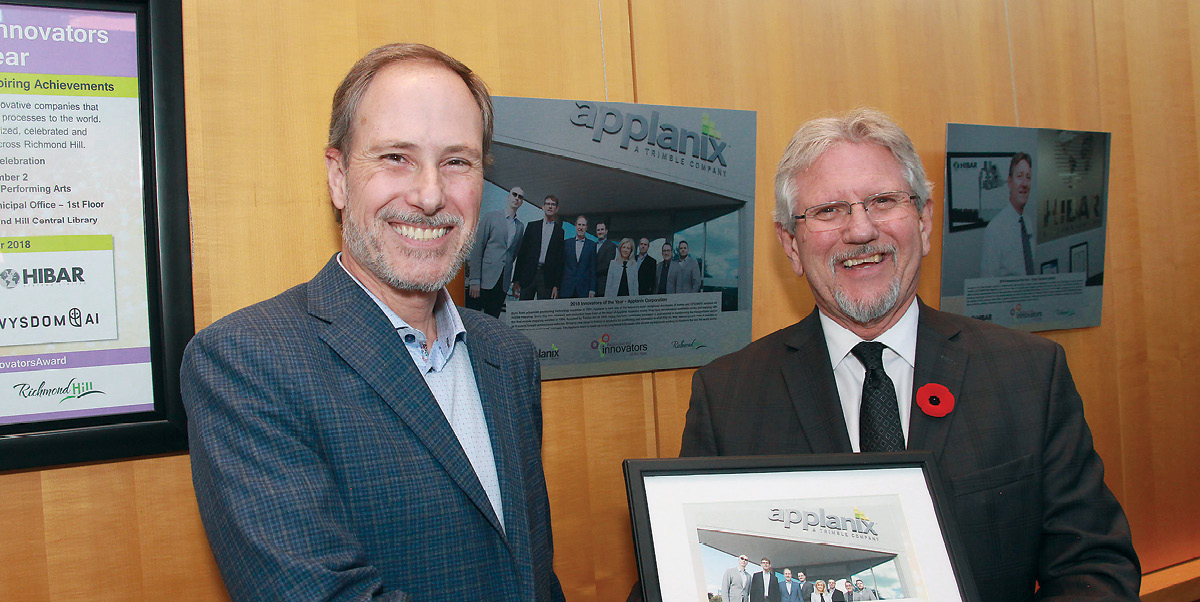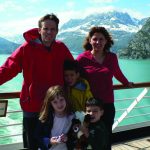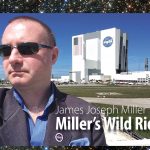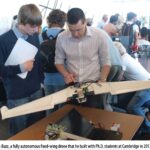Steve Woolven’s early experience running his family’s resort coupled with his ambitious academic pursuits helped lay the groundwork for a successful career in the PNT industry and his current role as President of Trimble Applanix.
Fruition is a word that comes to mind when examining the life and career of Steve Woolven. Experiences at an early age, at work and at school, left significant and lasting impressions, preparing him for a ground-breaking career in the research, development and commercialization of inertial positioning technology.
First, the Backdrop
“I was born in Toronto, Canada,” Woolven told Inside GNSS, “and then, as an infant, I moved to Ottawa, the capital, with my parents. I can remember as a kid the snowbanks being so high by February that you could stand on them and touch the eavestroughs of the roof.” He was already reaching for the sky. “Things like that stick out,” he said. “We lived in Ottawa until I was about 12, and then moved back to Toronto.”
Young Woolven grew up playing football, Canadian football, which is very similar but not identical to American football. “The Ottawa Rough Riders were my favorite team,” he said. “I still watch the Canadian Grey Cup.”
By the time he got to high school, his career had taken an academic bent. Both his parents were very supportive of his scholarly endeavors, and that meant a lot to him, but his hands-on involvement in the family business had an equally telling impact. “My dad was an entrepreneur and was quite proud of his real estate business,” Woolven said, “but they also ran a family resort, with cottages that we rented out. It was an idyllic place. I remember we had just one phone out there, and it was a party line, so people could come up and just literally drop off the grid.”
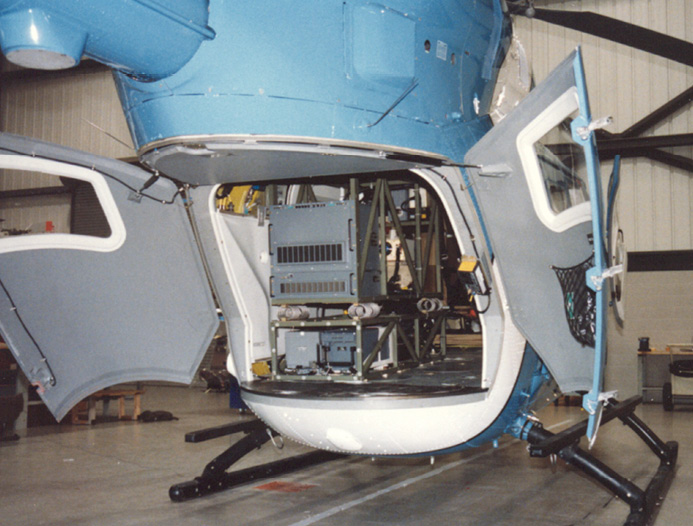
Seeds Sown
“My dad was occupied running two businesses, so by the time I was 14, maybe 15, he basically handed me the reins of the family resort. I ran it, with my younger sister, with my dad as a backstop.”
The fact his father trusted him to take on the job says something about young Woolven’s character. His responsibilities included looking after the guests, and much more. “I learned to do all kinds of repairs,” he said, “plumbing, electrical and outboard engines. We worked with tractors, launching boats, cutting hay, grading roads, so I got a pretty wide set of experiences, and learned to be self-sufficient.”
It was about problem solving: “You had to do a lot of thinking on your feet,” Woolven said, “when you had guests standing at the door with a hot water tank that was leaking, or a boat motor that wouldn’t start.”
And about good business: “I guess today we would talk about the customer success perspective; if you do a good job, the guests come back, and they came back year after year. We were tremendously successful at getting repeat customers. Today, we refer to this as recurring revenue. We didn’t use that term back then, but that’s what it was.” And that was something Woolven would remember.
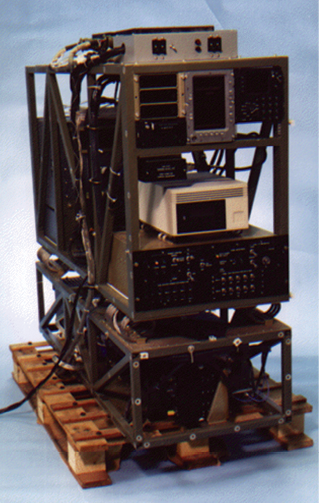
The Academic
Unsurprisingly, the president of a highly innovative technology firm was interested in math and science as a student, but also history, and he credits a tough Grade 13 English teacher with instilling in him an appreciation for the written word.
Woolven became the first in his family—though not the last; he was followed by his younger sister—to graduate from university. He earned undergraduate and graduate degrees in engineering, including a doctorate, from the University of Toronto.
“As an undergrad I did a program called Engineering Science. It was a mix of pure sciences, two years of heavy physics and math, and then four years of engineering specialization crammed into the last two years. It was a tough undergraduate degree, hugely broad, from general relativity, special relativity to thermodynamics, and then all the engineering courses. And we had a terrific group of people, some of whom I still run across in business today.”
In grad school, he was all about integrated optics, blending lightwave theory in physical optics with electronic digital signal processing. “At the time, it was pretty leading-edge stuff,” he said, “and to some extent it still is, and from day one my goal was to come out of university with a Ph.D.”
“We were working under contract with one of the Canadian defense research institutes,” he recalled. “My thesis was around developing an optical computer for real-time target detection and recognition. Woolven did a master’s and then a Ph.D. in accelerated style. He was zeroing in on his true calling, though he didn’t know it yet.
“That was really good practice for later commercial and industrial experience,” he said. Indeed. “We faced the same kind of challenge when I joined Applied Analytics [now Applanix],”Woolven said, “where we wanted to take the research, IP technology, something that you can demonstrate on a bench, and move it into the field in a reliable product, something a customer can use to actually solve a problem.”
But we’re getting ahead of ourselves. Woolven first had to make the big move. “The fact is, I had my mind set on a career in academia. I loved the research and teaching and that’s what I wanted to do.”

From College to Applanix
“The next step for me was post Ph.D. research work at U of T, extending the research I’d already done, while also lecturing graduate students. One of the people I was doing research with at the defense institute happened to be sitting across the hall from another researcher who was working with the founders of a new start-up. These were the Applied Analytics founders, Blake Reid, Erik Lithopoulos and Bruno Scherzinger. The person I knew thought I should meet them. Of course, I didn’t know a thing about them. And I couldn’t Google them.” It was the early 90s. “They’d come out of Honeywell’s Advanced Technology Center, here in Canada, and had won several defense research contracts, doing integrated navigation for industrial applications.”
Woolven set up an interview with Reid and learned they had a story and a vision. “The dream was inspiring,” he said, “to take a technology developed for defense applications and move it into the industrial space, the professional survey and mapping space. I remember leaving the interview, calling my wife and saying—”
What a minute. Wife? We missed something here, but we’ll catch up with that half of the story later.
“—calling my wife and saying, ‘I don’t know if these guys have a hope of succeeding, but this looks like it could be a really fun ride.’” Woolven joined Applied Analytics full time in 1992 as employee No. 8.
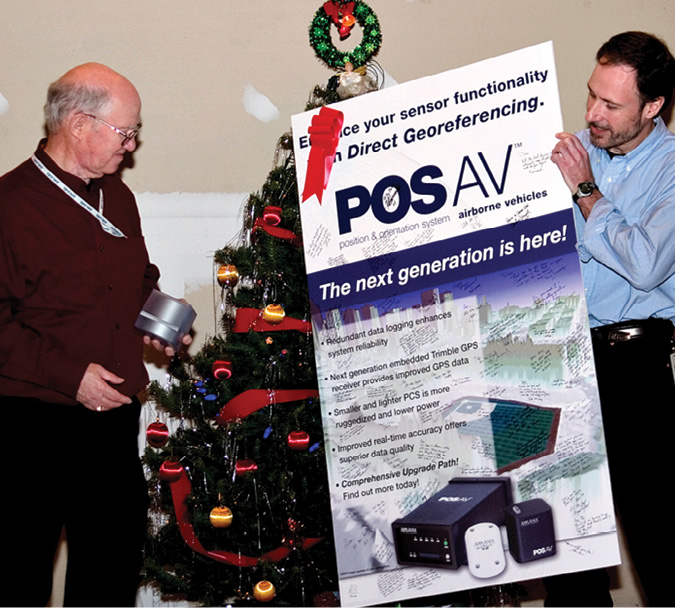
That first Applied Analytics Technology
“The company was using inertial technology, GNSS technology and other sensors to create what we now call a sensor fusion engine,” Woolven said. “In other words, it was the grandfather of the technology that is in all Applanix products to this day. It was a big five-foot rack back then, what the first fielded Applanix POS systems came out of, written in Ada. They were using it as a benchmark to test the accuracy of new helicopter navigation systems, and also in underwater towed body research, using acoustics to look for—you can guess what they were looking for—undersea bodies that are bigger than a bread box but smaller than a car.”
As the company grew, Woolven went from research engineering to industrial engineering to project manager and eventually became head of engineering. But the company still had a way to go. “We were a bunch of really smart engineers,” he said, “but when it came to understanding what the market needed, we probably thought we knew more than we did.”
The company made a series of thoughtful moves, bringing in key personnel, with the right experience and perspective, who would ultimately help to transform the business. Dieter Zeuner joined Applanix out of Zeiss, formerly in East Germany, and helped the company understand the pathway into the aerial photogrammetric market. “Dieter led us down the path of taking this technology and making it work in the digital photogrammetric space and the brand new aerial LiDAR space,” Woolven said. “And on the marine side, we partnered with Roger Hutchins, who helped us understand the marine hydrographic segment.
“These individuals knew what the problems were that needed to be solved in the real world. They understood the hardware we needed to work with and most importantly the customer workflows. We needed that practical knowledge. Without it, I don’t think we would have been anywhere near as successful as we ultimately have been.”
There was something about Applanix, a certain, dare we say, “magic,” and the world of surveying and mapping was starting to feel it.
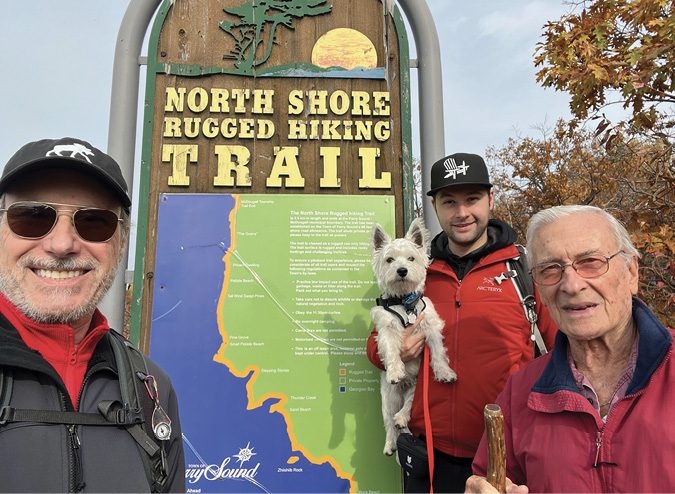
The Trimble Affair
By the late 1990s, Applanix was growing rapidly. “We had inertial technology down pat,” Woolven said, “but in order to push the performance and drop cost, we needed to get access to GNSS. Not just the boards, but to get into the actual IP of GNSS. We also knew that Trimble had great technology and great access to markets, customers and distribution.”
To be sure, anyone who was around at the time knew Trimble was a big-time navigation and positioning company that had its act together. Discussions ramped up between the two companies in early 2003, and by July of that year, Trimble was able to announce that it had agreed to acquire Applanix, and the rest, as they say, is history.
“The intent was always to bring Applanix technology into the Trimble fold,” Woolven said, “so that our sensor fusion engines would become available right across the Trimble product line, and then to build, to integrate their GNSS with our aided inertial technology.” The first generation of tightly coupled technology, after the acquisition, was dubbed, for internal purposes, mPOS.
Applanix was already known as a premium, high-end brand. “Our products tended to live in the upper end of the price points,” Woolven said. “After the acquisition, we worked to build out our portfolio, to service customers from entry level requirements right through to high end products, and we’ve continued to push that barrier.
“Our technology has demonstrated the ability to work in really difficult GNSS or GNSS-denied areas,” he said. “Of course, open-sky technology is important, but anybody can do GNSS in the middle of a farmer’s field. It’s a different story once you get into more complex, urban environments. It took a lot of hard work. We did testing in downtown San Francisco, for example, which is a nightmare for GNSS, and in many ports and harbors, where you’re in and around bridges, large vessels, big cranes overhanging, constantly causing GNSS occlusion. It was those kinds of issues that we couldn’t solve without tightly coupled algorithms. Then, to be able to take the technology into difficult areas, holding accuracy for a longer period of time, or giving you high-accuracy, direct georeferencing data, at a price point that makes sense for your business model; that was really the game changer.”
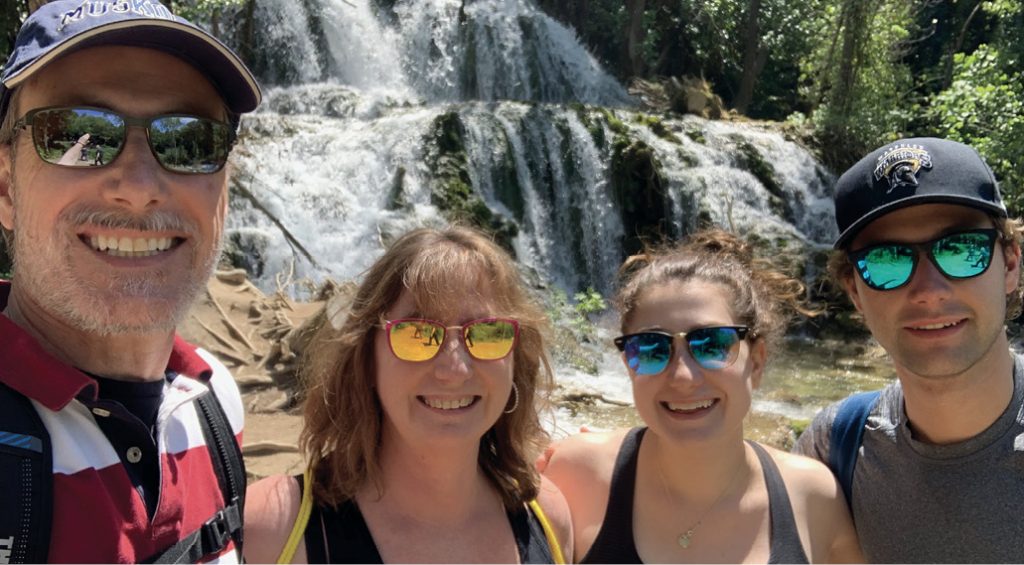
What’s That Magic?
“One of the things that makes us special is the way we serve our customers, being there when they need us and finding solutions,” Woolven said. “Having great technology is crucial, but it’s the ability to provide the whole product, from the hardware to the post-processing software, and Trimble RTX®, which is our advanced precise point positioning technology, and then we bring our entire customer success organization, where, when the customer has a problem, say you’ve got a survey vessel sitting at the dock or an airplane sitting on the tarmac and it can’t take off. We’re able to support those customers, walk them through things, whatever it needs, to limit their downtime.
“And then, we’ve had those true visionaries, Dieter, Roger, Erik Lithopoulos, who could actually see that the industry was changing, moving toward digital photogrammetry, for example, knowing that LiDAR scanning wasn’t going to work without direct georeferencing. It’s about knowing what those new businesses are going to need, and mapping out what the end game is going to look like. Then you can bring that vision back to engineers, so we can go away and develop it.”
Today, many people think of Applanix as a hardware company, and it still is that, but Woolven said it’s much more. “We’re good at making hardware, but that’s not really our core IP. What we do is make algorithms that solve people’s problems. We code them up, make embedded firmware, desktop and cloud software, and that, married with the hardware, is what makes the magic happen. It’s the application of those algorithms to solving people’s real-world problems. That’s what we’re really good at.”
Better Than Ever
Woolven has continued to work to move Applanix into new markets, like the UAV market. “We launched the Trimble PX-1 RTX, targeting commercial drone navigation,” he said. This is the much lauded, robust, centimeter-level, continuous GNSS-inertial positioning engine with over-the-air Trimble CenterPoint® RTX correction service.
“It’s meant a different approach to our customers in that market,” Woolven said. “Rather than a single-sale type of product, it’s more like a cell-phone business model, where you buy the hardware for a small amount of money, it gets integrated into the UAV, and then you buy the capability you need, depending on what type of job you’re flying, whether that’s a single-base type solution, or you might want to use CenterPoint RTX technology…It allows our customers to tailor their own business models so that the costs fit the projects they’re trying to do.”
All that attention paid to customers, understanding their issues, solving problems on the fly and keeping everybody happy, sounds kind of like running a family holiday resort as a teenager in Canada. “There was less sensor fusion back then,” Woolven said.
No Place Like Home
Woolven still lives in Toronto, where he has been and remains a family man. It was his wife, readers will recall, in whom he confided, all those years ago, when it was time to decide on his pathway forward.
“My wife has just as many degrees as I do,” Woolven said. “She’s a medical doctor, currently chief of Family and Community medicine at one of the downtown Toronto hospitals, so she’s got a few things on her plate. She’s a well published author and was just recognized as the family medicine physician of the year here in Toronto. She’s pretty accomplished and I’m pretty proud of her.”
The results of this stellar union were, among other things, two children, a boy, now 28, and a girl, now 25, who just graduated with a master’s degree in Psychotherapy. “We had our hands full when the kids were young, two kids, two dogs and two active careers. But we made it run by working as a team,” Woolven said.
Woolven’s mother passed away several years ago, but his father, now 90, remains the rock-solid foundation of the Woolven line, and he still enjoys keeping young Woolven on his toes. “We still go out hiking,” Woolven said. “Not too long ago we went out to hike Zion National Park in Utah, like we used to do when I was younger. This time we took my son, so we had three generations raising dust out there.” To celebrate his dad’s 90th, in 2023, Woolven took the family up to the Muskokas, near Georgian Bay, for another week of hiking. It seems you can’t keep those Woolven boys down.
The old family resort is still there, now under a different owner, the senior Woolven having sold it some 20 years ago. The descendants of some of the guests Woolven used to serve still come back every year. Credit his own proficiency in attending to their needs. No doubt management of the place has suffered since he ran it as a boy, but his attention was needed elsewhere. We think he’s kept the place with him, in his heart and in his head, the whole time. He’s worked his own kind of magic to help turn Applanix into a very successful concern. Fruition, we said. Fruition, indeed.

